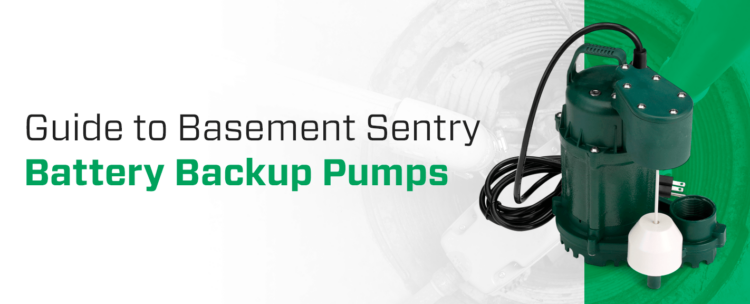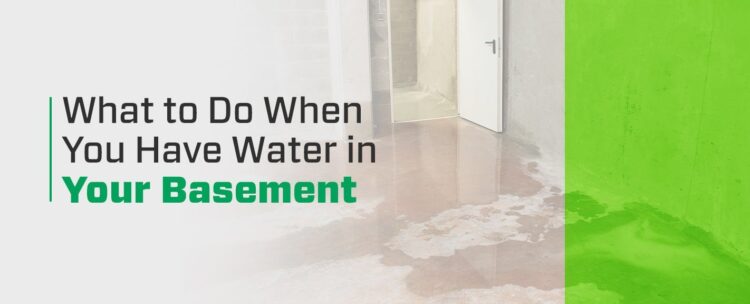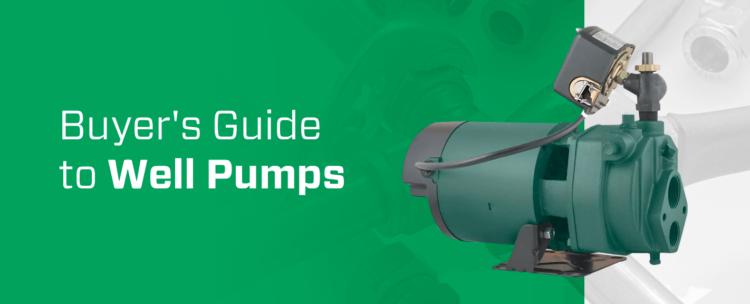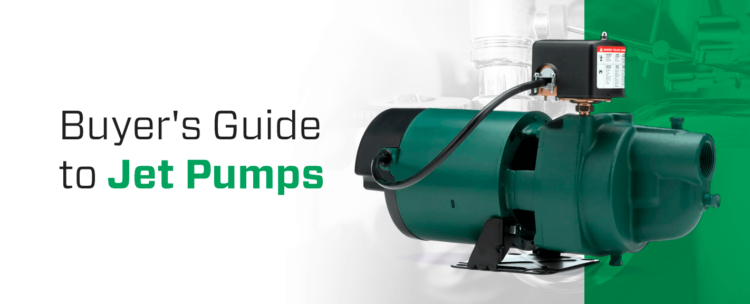
If you have a basement in your home that floods or could flood, you should invest in a sturdy, reliable sump pump. This small but robust pump pushes the water out of your basement to prevent flooding and helps keep your valuables safe. A sump pump could give you peace of mind if you live in a wet area or worry about a rainstorm damaging your basement.
While you could hire a professional plumber to put a sump pump on your property, there are additional costs to have a sump pump installed. This is a project you can take on yourself with a little knowledge. Whether you’re replacing your old pump or you’ve decided to install a new one, we’ll give you the tools and instructions you need to make your DIY sump pump installation a success. Use this guide to learn how to install a sump pump in your home.

What Is a Sump Pump?
A sump pump is a piece of equipment that removes excess water out of the basement. Even if you don’t live in an area that gets a lot of rain, you never know if you’re going to have a random rainstorm that could flood your entire living space.
How does a sump pump work? This pumping system goes into a reservoir called a sump basin or a sump pit, which sits in a hole in the lowest level of your basement or crawl space. Once the float switch on the pump detects that water has accumulated, it automatically turns on and moves the water away from the house. As soon as it has cleared away the water, it turns off.
If you’re wondering whether you need this pump in your house, here are some of the reasons to buy a sump pump:
- Reduce the risk of flooding: During heavy rainstorms, flooding could occur if water leaks into your basement or crawl space. Since a sump pump controls the flow of water away from the foundation of your home, your property won’t suffer from short-term or long-term water damage. As a result, a sump pump also improves the indoor air quality in your living space by getting rid of excess humidity.
- Prevent the growth of mold and mildew: Stagnant water in your basement encourages mold and mildew to grow. These fungi could cause structural damage in the wooden features of your home, along with allergies and respiratory problems in your family members. When sump pumps remove standing water in your basement, mildew and mold are less likely to form in your living space.
- Keep away insects and other pests: Excess moisture wears out the wooden joists and walls within the frame of your property. When wood rots, it attracts termites, ants and rodents, which all bring contaminants and unpleasant odors into your living space. Removing the standing water with a sump pump will reduce your risk of pest infestations.
- Limits the chance of fire or electrical damage: Water and electrical appliances don’t mix. If the wires to your washer, dryer or other electrical appliances get wet, they could cause a power outage or even a fire in extreme cases. Reduce your risk of damage to your property by preventing water from flooding in your basement or crawl space.
Factors to Consider When Choosing a Home Sump Pump
When selecting the best sump pump for your house, you should consider a few factors. If you’re replacing an existing sump pump, you should order the same type, unless you had a significant problem with it. Check the identification plate attached to the unit to find out the information you need to order a new one. If you’re installing a brand-new sump pump system, review the following features to help you find one that works for your home.
1. The Type of Sump Pump
There are two primary types of sump pumps that you could install in your house:
- Submersible sump pumps are popular because they’re quiet, and they’re excellent at removing unwanted water from a basement or crawl space.
- Pedestal sump pumps are more cost-effective and smaller than submersible sump pumps, but they cannot be submerged in water. Pedestal pumps are typically used in older home replacement applications

2. The Material of the Sump Pump
Sump pumps, whether submersible or pedestal sump pumps, need to be resistant to corrosion and water damage. Manufacturers usually create sump pumps out of one of these materials:
- Cast-iron is durable and dissipates heat the best.
- Thermoplastic is an economical option for your residential sump pump.
- Aluminum is cost-effective and reliable.
At Zoeller at Home, we prioritize the quality of our pump equipment, offering cast-iron submersible and pedestal sump pumps to ensure that your home stays protected.
3. Float Switch of the Sump Pump
The float switch is what tells the sump pump to turn on or off. While both of these mechanisms detect water and activate the functionality of the sump pump, one may be better for your home than the other.
- A vertical float switch moves up and down on a rod and fits in most narrow areas. Electromagnetic vertical float switches have no moving parts and experience longer life.
- A tethered float switch swings in an arc as the water level changes and requires more space.
4. Horsepower of the Sump Pump
A sump pump’s horsepower determines how quickly it can move water. One important consideration of how to determine the right horsepower for your sump pump is the depth of your sump pump basin. When replacing a residential or home sump pump, replace it with the same or higher horsepower of the existing unit. When in doubt, selecting higher horsepower is advised.
5. Battery Backup for the Sump Pump
The purpose of a sump pump is to remove water from your basement or crawl space, especially during a flood. Your power may go out when a harsh storm hits. If your sump pump only relies on AC electrical power, it could stop working during a time when flooding is most likely to happen. Choose a battery backup sump pump so you have protection from water damage when you need it. For ultimate peace of mind, view our line of Basement Sentry Backup Sump Pumps to protect your home and valuables with a sump pump replacement.

Where Should a Sump Pump Be Placed?
A sump pump should go inside a basin or pit, which you should install in your basement or crawl space. Put a replacement sump pump where you had installed the old one. You should place a new one on the bottom floor of your house, where you’ve had the highest water accumulation.
To prepare the place where you’re going to install the sump pump:
- Order and test the materials: Before making any changes to your living space, order the sump pump you need. While you can find the specifications online if possible measure it in person to make sure it’ll fit in your sump pit. While determining its size, you should also test the sump pump and check valve to make sure everything works efficiently. Once you ensure that you have a reliable sump pump and check valve, you can properly create the space for this new equipment by setting up a sturdy sump pump pit.
- Look for the nearest outlet: Since your sump pump runs on electricity, you need to make sure it has access to its own Ground Fault Circuit Interrupter (GFCI) outlet. These power sources will provide the energy you need while preventing electric shock. If you don’t have one of these outlets near your basin, you should have an electrician set one up for you. Using an extension cord to connect your sump pump to the nearest outlet could damage your insulation and make it insufficient for your sump pump.
- Dig a hole: If there isn’t an existing sump pit you will need to create a hole in your basement that’s wide and deep enough to fit the sump pump basin. You need to make sure the top edge of the sump pump sits flush with the floor level. Measure the radius of the sump basin and mark the perimeter of the circle a few inches larger than it. Then, dig the hole until you can fit the pump basin inside. If you have a concrete floor, break through it with a jackhammer.
- Install piping: Set up high-pressure fittings and PVC pipes that will ultimately control the flow of water out of the pump and away from the house. Use J-hooks to hang the pipes from the joists in the basement. Make a hole through the outside wall to run the piping and seal the hole with a silicone sealant. Connect more PVC piping onto the existing line to make sure the water runs a few feet away from the house. Spread out the water flow by attaching a PVC pipe increaser at the end.
Tools and Materials Needed to Install a Residential Sump Pump
Besides the sump pump itself, you need the following products to accomplish your sump pump installation:
- Drill with a 3/16-inch bit
- Plastic or fiberglass sump pump basin
- Sump pump basin lid
- Wet/dry vacuum for removing water and debris
- PVC primer and solvent
- Tape measure
- Rubber coupling boot
- Utility knife
- Adjustable pipe wrench
- Hack saw
- Zip ties
- Screwdrivers
- Gloves
- Sump pump check valve
- Rags or towels
- Adjustable pliers
- PVC piping
How to Install a Sump Pump on Your Own
Check out this easy way to install a sump pump so you can add the unit to your house all by yourself. You can also follow our step-by-step sump pump installation guide:

- Remove the old pump and check valve: Unplug the old pump from the GFCI outlet and remove it from the pit. At this point, you should also disconnect the check valve and let the water drain out. While you can reuse an old check valve, it would be best if you replaced it along with your new sump pump.
- Inspect the sump pump pit: Check the basin and make sure there’s a stable, level bottom for placing the new pump inside. It should be clear of water and debris, but if you see anything obstructing it, take a wet/dry vacuum and clean out the excess materials.
- Prepare the new pump: Carefully take the new pump and check valve out of their boxes and set them aside. Make sure you have the registration information and the user manual to help you during this process.
- Attach the PVC discharge piping to the union: Wipe off any water or debris from the existing PVC discharge piping with a rag. Liberally apply PVC primer and glue to the inside of your PVC threading union, and firmly place the union on the discharge piping for a tight fit.
- Figure out the length of your piping: Measure the length of the tubing you need from the discharge of the pump to the union. Subtract the check valve’s size from that of the piping to determine how much you should cut the tubing.
- Cut and clean the piping: Using a hack saw, cut the PVC piping in two pieces. Run a utility knife around the inside edges to smooth out rough, uneven surfaces. Attach the appropriate fittings for your pipe size, wrapping the threads in plumber’s tape.
- Connect pipes to the check valve: Loosen each clamp of the check valve with a screwdriver and install the piping tightly into the rubber boot of the check valve. You may need to use force to make sure they fit snugly and tighten the clamps with a screwdriver.
- Create weep holes: Weep holes prevent the pump from air locking, which is when the air in a pipe prevents the flow of water. To create a weep hole, drill a 3/16-inch hole in the pipeline between the pump and the check valve.
- Install the pump: Screw the threaded pipe into the pump’s discharge area until it’s tight. Place the pump into the pit, ensuring it’s level and there’s space on both sides for the float switch to move freely. Tighten the union on the discharge pipe until it’s secure.
- Connect and test the pump: Plug the unit into a GFCI outlet and secure the cord with zip ties. Test the pump by partially filling the pit with water. It should automatically turn on and drain the basin. After you’ve ensured that the sump pump works, place the basin lid over the pit to eliminate odors.
- Register your sump pump: Once you have your product installed, register it online with Zoeller at Home. Registration allows us to contact you of any changes in safety and confirm ownership if you need to fix or return it.

Select a Sump Pump From Zoeller at Home to Prevent Flooding in Your Basement
Zoeller at Home provides high-quality sump pumps and accessories for your home’s basement or crawl space. Protect your investment with a sump pump that can drain water away from your living space and prevent water and electrical damage. You can have peace of mind knowing that your home is still protected when your primary pump fails with a backup sump pump from Zoeller at Home.
Look for a retailer near you to find where to buy a sump pump near you, or browse through our selection of sump pumps and sump pump accessories online. For more information about how to install a sump pump, you can contact us online to speak with a representative via live chat.
Page updated: April 15, 2021



